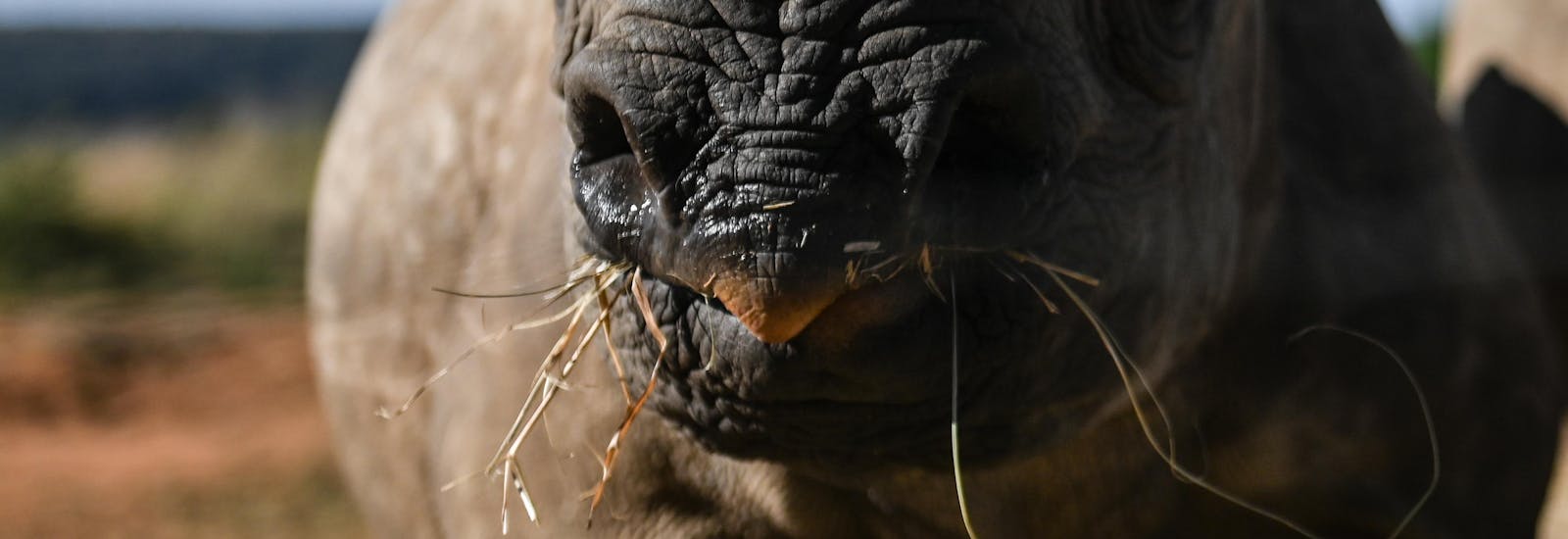
Treating rare black rhino on the Shimongwe Project
Tucked away in the Limpopo district in the north-east region of South Africa lays the small town of Ellisras, home to the Shimongwe Wildlife Project run by African Conservation Experience. The Project offers a limited number of places to students who are training to become vets, to work with a wildlife vet managing and treating large wild animals living in their natural habitat. During June and July this year I was fortunate enough to have been selected to work on this project.
Mogol Dierekliniek (Afrikaans for Animal Clinic) is the base for Dr Neil Kriels veterinary clinic. This compact medical facility with its one operating theatre and consulting room caters for all small animal veterinary support within the region. However, Dr Kriel’s veterinary and conservation duties for the large game and wildlife animals cover a very large area of some 150 square miles, that’s about 3 times the size of Hampshire! At the start of the project I and the other volunteers were forewarned of the mixed pace of life on the reserve: at times slow and a little mundane through to a franticly busy schedule dealing with numerous crises within the reserve. The latter proved itself on the very first day for me!
With enthusiasm and excitement that couldn’t be waned by jetlag our day started at 5am with a busy schedule opening with darting (tranquilising) lions. Day one and we were up-close and personal with the king of beasts! Six lions were being relocated to another farm and once Neil had darted them our job was to blindfold the unconscious animal, put them into their transport cages and load them onto the vehicles that would take them to their new home. With adrenalin rushing and heart pounding, getting hands on with these magnificent animals was a fantastic feeling complemented by the knowledge that we were immediately contributing to the team effort on looking after these animals.
Our work done, the next task was treating a reported injured Black Rhino. I had to pinch myself to check I wasn’t dreaming! Less than 24 hours in country and I was working on two of the ‘Big Five’ (buffalo, rhino, elephant, leopard and lion). The Black Rhino had been injured by a White Rhino and had serious puncture wounds to its face and flanks that required immediate treatment. This was no small task akin to finding a needle in a haystack – a wounded rhino amid 20,000 hectare area of dense vegetation. It took time and care as Black Rhinos seek out their assailants or cause of pain – in this case us!! – but eventually the rhino was tracked and sedated by darting. The wounds were badly infected and maggot ridden, we treated the wounds and had to move him into an isolation compound until fully recovered. “Just like leading a horse” was our instruction; blindfold the rhino, wake him up and lead him on a tether into a trailer. Leading a 2½ tonne male Black Rhino who’s nursing a hangover on the end of a rope is quite a challenge!!!
With the Black Rhino safely lodged in the recovery compound we reflected on our day as the evening meal approached. So much seen and done in the first day – but it wasn’t over yet. Around 8:30pm we received a call out to treat a sick Buffalo cow ‘in the bush’. I was so excited; the third of the Big Five on day one. As it turned out this was a scary encounter with a Buffalo bull chasing us off whilst we were trying to locate the sick cow. After three hours of searching in the night the animal still evaded us, it was decided to wait until daybreak to continue the search. Exhausted but on an emotional high, so ended my first day!!!
The weeks that followed were equally busy where I had the opportunity to work with and treat a wide variety of animals: brown lions, white lions, black rhino, white rhino, zebra, buffalo, antelope (tsessebe, kudu, nyala, sable, black impala, gemsbok, eland), ostrich, warthog, and blue wildebeest. Additionally I was fortunate enough to see and get close to hippo, giraffe, blesbok, springhare and porcupine. The effort and diligence of the rangers and vets within the reserve is boundless and their energy is paying off with stabilising the decline in endangered species under their watch.
This is a fantastic project to be involved with; to those who live and work there, this isn’t just a job – it’s a vocation, a way of life that they are dedicated to treating, healing and sustainably managing the wildlife that they love in a country that they love. It has inspired me and made me even more driven to become a veterinary surgeon. Hopefully one day I shall contribute too and work as a wildlife vet in Africa.

